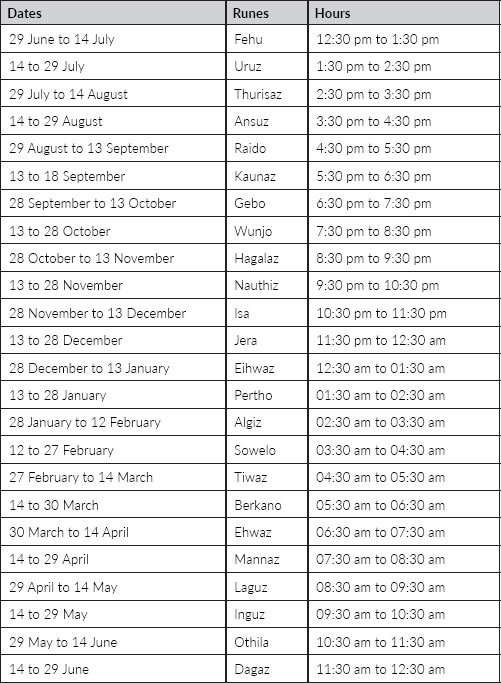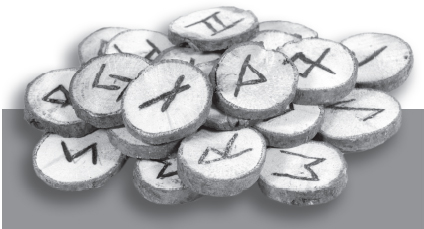

The primary use of runes is for divination, but runes can also be used for magic. Rune magic is field of study separate from rune divination, so what follows is a very brief overview. To achieve any success in rune magic you need to develop a deep understanding and familiarity with mythology and history of the runes.
In the ancient Northern magic tradition there were essentially two different strands of magical practice. Seidhr was shamanistic in nature and it involved trances, dreams, and astral travel to and through the nine worlds. Like many ancient forms of magic, Seidhr could have a darker side that was intended to bring sickness and even death to one's enemies. Galdr was closer in nature to ceremonial magic. It involved the use of talismans and charms, particularly those that are spoken aloud. Most rune magic is of this sort.
There are eight different techniques that are involved in rune magic. The number eight has great significance with respect to the runes, as reflected by the three Aettir: there are eight runes in each Aett.
The use of individual runes as charms is well established in both archaeology and in the literature of northern Europe. The magical meaning of the runes is closely related to their divinatory meanings—for example Fehu is used magically to attract wealth, although it could also be used negatively to deprive another of material comfort. Positive magic with runes is known as “weal working,” whereas negative magic is known as “woe working.” Both the positive and negative forms of magic were used in the past. However, the majority of charms were defensive and protective. For example, instead of trying to kill an enemy, a charm would be used to make sure that the enemy's attacks had no effect. There are several references to charms being activated with spoken commands that were said to trigger them. The exact runes used for charms as described in the “Havamal” magical text is open to debate.
Bind runes are runes that are combined to increase their magical power. Two or more runes are inscribed onto each other to form a new pattern, and this is then used as a personal symbol or worn as a pendant. There are two main types of bind rune: those made from a person's name or initials, and those made from specific runes to combine their qualities.
It is quite popular to construct a bind rune using runes that make up the initials of your own name, but these may not actually be runes you may want to be closely associated with. The second method involves combining runes according to the result that you are looking for. For example, if you need courage and strength combined with resilience and good judgment, you would combine the runes Uruz and Tiwaz. Wearing this as a pendant would enable you to draw these properties into your being.
When making a bind rune, the two that are chosen for the purpose need to be combined in a way that is pleasing to the eye and that has a kind of symmetry. Choosing suitable runes for the effect you require takes serious thought, but that is only the first stage. If you choose the wrong runes you will still have a result, but it may not be the one you had hoped for. Another way in which rune magic may be worked is to carve a suitable rune three times on a talisman or candle, as this is represents completion on all three planes. Traditionally, the magical energies are classified into three parts: the elements, the runes, and the gods. In combining the runes, each of these is addressed. Other symbols besides runes were used in Old Norse magic. Some of these symbols were variations on the runes, and others simply referred to a single concept or deity, such as the hammer of Thor.
To make a talisman you need to carve or paint the rune onto an item and carry it accompanied by a suitable herb or crystal. The tables on the following pages shows the magical correspondences for each rune. Table 1 shows the corresponding gods, colors, stones, and trees. Table 2 shows the corresponding flower, herb, astrological sign or planet, and card of the Tarot.
Table 1: Magical Correspondences: Gods, Colors, Stones, and Trees
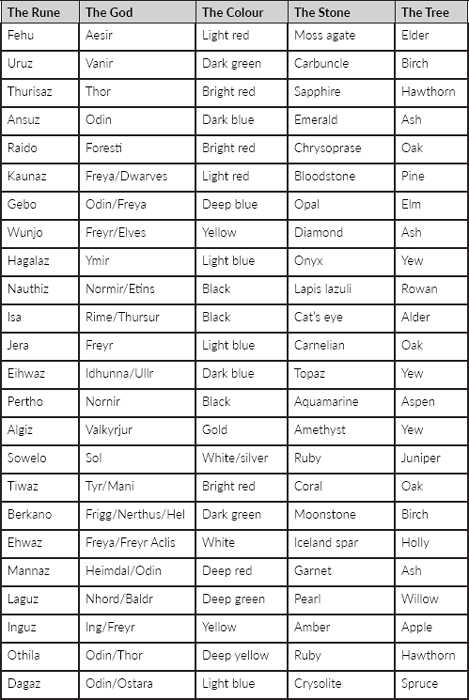
Table 2: Magical Correspondences: Flowers, Herbs, Astrology, and Tarot
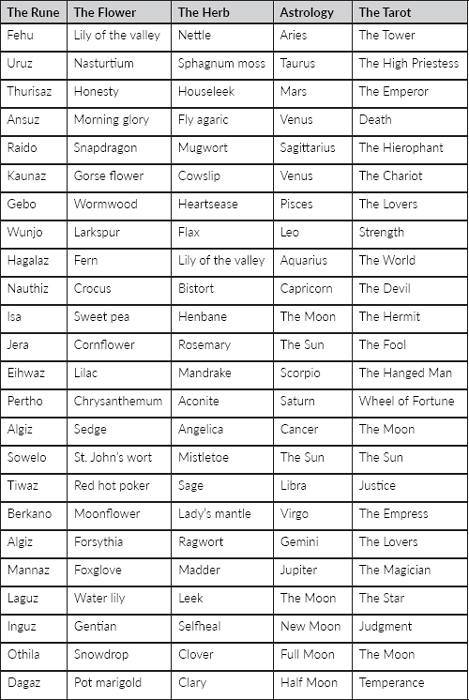
If you like the idea of using your initial as a talisman or engraved on something and threaded through a leather cord as a pendant, the following table will show the corresponding rune to the letter of our modern alphabet. However, take care that your initial suits your requirements and that it is not a difficult or unlucky rune. If your initials are SS you may decide against this method of making a talisman. Similarly, if your name begins with an H, you might conjure up the destructive power of Hagalaz; if your name begins with an I or EE sound, as in names like Eve or Yvonne, you will be drawing the frozen and immobile power of Isa.
Bear in mind that the English alphabet equivalents are phonetic: Ansuz may look like an “F” in our alphabet, but its sound is that of “a.”
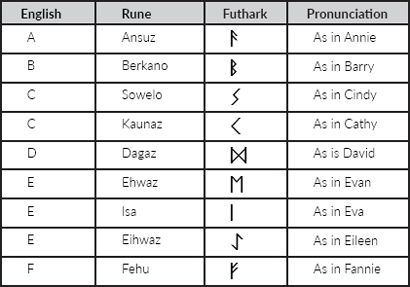
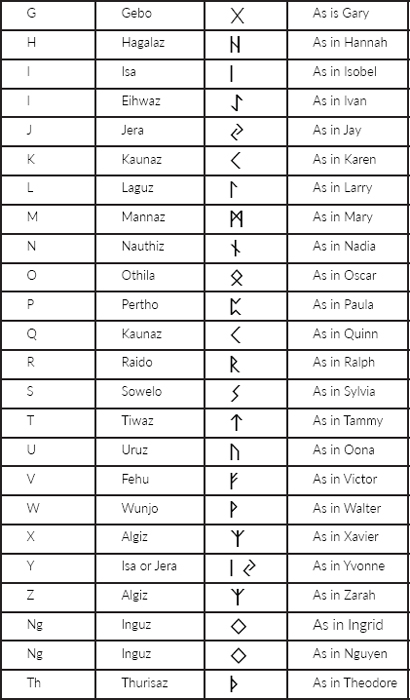
You may like to check out the calendar to see which runes rule the various weeks of the year. Each rune rules two weeks, so in this way you can check out the rune for your date of birth or for any date in any year. For example, if you have something special planned for a particular day or week (like a wedding!), you may like to see what the runes have to say about this. In addition, each hour of the day is ruled by a rune, so if you have a special time planned for some event or for a meeting, see what the runes have to tell you.
It is interesting to note that Hagalaz covers Halloween—and some say that the name “Halloween” derives from a form of the word “Hagal” or “Hagalaz.”
Table of Dates and Hours
